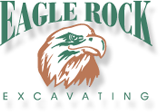Engineers have explored using different products, such as littles rubber or smaller sized stone mixes, to minimize sound. They likewise have actually looked at the direction, depth and spacing of the lines that are utilized to increase friction in concrete roadways. Striations that are three-quarters of an inch broad and 1/16 to 3/16 of an inch in depth appear to be quietest, Mr. Rasmussen said.
EXPAND.
Near Hunts Point, Wash., a special neighborhood of primarily waterside homes throughout a heavily trafficked bridge from Seattle, roadway noise was minimized by 4 decibels after a nearby freeway was paved with peaceful asphalt in 2007, stated Tim Sexton, manager at the state Department of Transport’s Air Quality, Sound and Energy Policy.
Regional drivers were passionate at the time: “It resembles driving on carpet,” said one, according to a community newsletter.
Nevertheless, any muffling impact was gone within 6 months, according to Mr. Sexton. The asphalt surface area, which used techniques such as more negative structure, has in fact become louder than standard pavement over time as the divots ended up being filled with grit.
The pavement, which also weakened faster than routine pavement, won’t be utilized on the rest of the freeway, Mr. Sexton stated. Since of the deterioration of the product, a cleaning vehicle wouldn’t have actually been helpful in keeping the quietness of the roadway, he said.
Washington state hasn’t quit, however, and is still testing other sections of quiet pavement around the state, including five types of peaceful concrete with different surface area appearances. “It does not look like the pavement types that we’ve checked are going to work for the kinds of roads we’ve checked them on up until now, however we’re going to continue researching it until all the sections have been replaced,” Mr. Sexton said.
